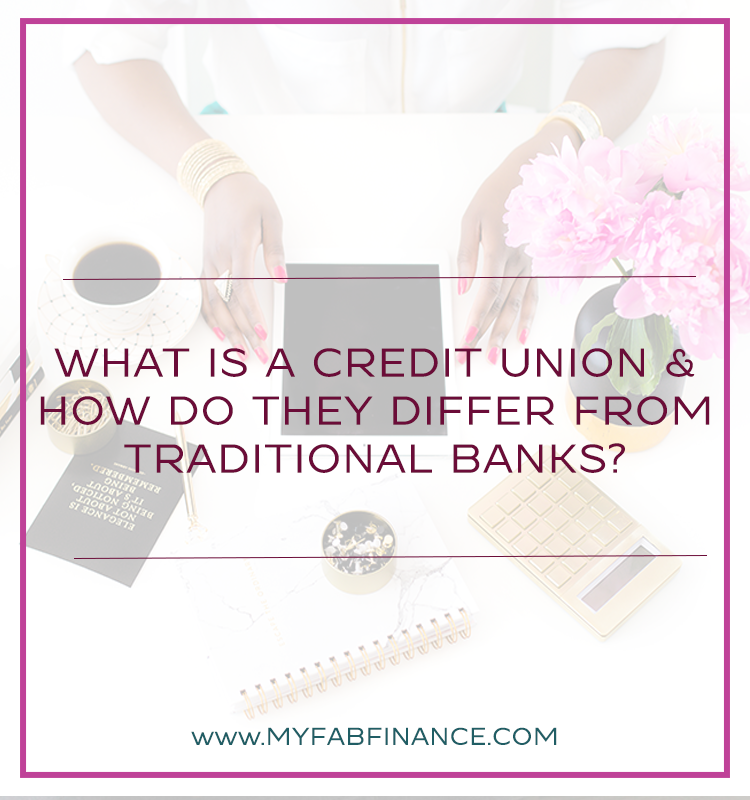In 2013 I decided it was time to bank smarter. I closed my Bank of America account and opened an account with Navy Federal Credit Union. I chose to bank with a credit union because I saw the benefits first hand during my time as a car saleswoman in college. Since then I have opened additional bank accounts to support my personal and business goals, but my everyday banking needs are still met by my credit union.
In May I had the opportunity to attend the CO-OP Think Conference and moderate a panel discussion. During the discussion, I learned so much about credit unions that I wanted to share more information with you in the format of #creditunionweek.
What is a credit union?
Credit unions are not-for-profit organizations owned by all of its members versus for profit banks that are owned by a handful or small group of individuals. They are federally insured full-service financial institutions.
This first official credit union was founded in Germany in the 1880’s when a group of farmers were turned away by traditional banks. Today most credit unions are full-service financial institutions offering sophisticated products and services such as checking and savings accounts, certificates of deposit, money market accounts and loans for vehicles, homes, debt consolidation, businesses, credit cards and more to their consumers and businesses.
The credit union philosophy is people helping people. When members leave money in savings accounts and other products, other members are able to receive mortgages to buy homes and loans for new cars with competitive interest rates.
What are the benefits of being a member of a credit union vs a traditional bank?
Credit unions typically have better interest rates than traditional banks because they reinvest any extra money generated back into the company, enabling them to offer lower rates to their members. The majority of credit unions offer free checking accounts instead, which have no maintenance fees, no minimum balance fees, and no transaction fees.
Credit unions are more flexible when it comes to low to middle-income earners. Over half of credit union members who use a credit union for the majority of their financial services have incomes between $25,000 and $75,000. As a result, it may be easier to get approved for a credit card or an auto loan and work to build your credit score to achieve your financial goals with your local credit union staff.
By nature, credit unions are often smaller than traditional banks, leading to a more intimate, personalized customer service experience.
How do rates compare?
According to the March 2017 reports by SNL Financial, an independent company that tracks interest rates and terms at financial institutions nationwide, found that the difference between banks and credit unions was greatest in car loan interest rates.
The average 36-month used car loan interest rate offered by credit unions was 2.74 percent compared to 5.04 percent for banks. For new car loans, credit unions offered an average interest rate of 2.66 percent for 48-months compared to 4.58 percent for banks.
The average interest rate for credit card loans at credit unions was also lower at 11.53 percent compared to 12.81 percent for banks. When it comes to deposits, SNL Financial found credit unions, on average, had slightly higher 5-year CD interest rates at 1.56 percent compared to banks at 1.27 percent.
How do you join a credit union?
Most credit unions allow you to open an account online. To find a credit union that you’re eligible for use the search tool on ASmarterChoice.org.
You may be eligible to join a credit union based on your:
Employer – many employers sponsor their own credit unions
Geographic Location – many credit unions serve anyone that lives, works, worships, or attends school in a particular geographic area
Family – most credit unions allow members’ families to join. So if someone in your family is already a member of a credit union – you may be eligible too!
Membership in a group – like a church, school or alumni, labor union, homeowners’ association, etc.
You’ll likely need approximately $5 to $25 to open an account. That’s generally the cost of purchasing one par value share at a credit union in order to establish a membership account.
Conclusion
Banking with a credit union might not be for you, but it’s important you have alternatives to traditional banking institutions.

You said: